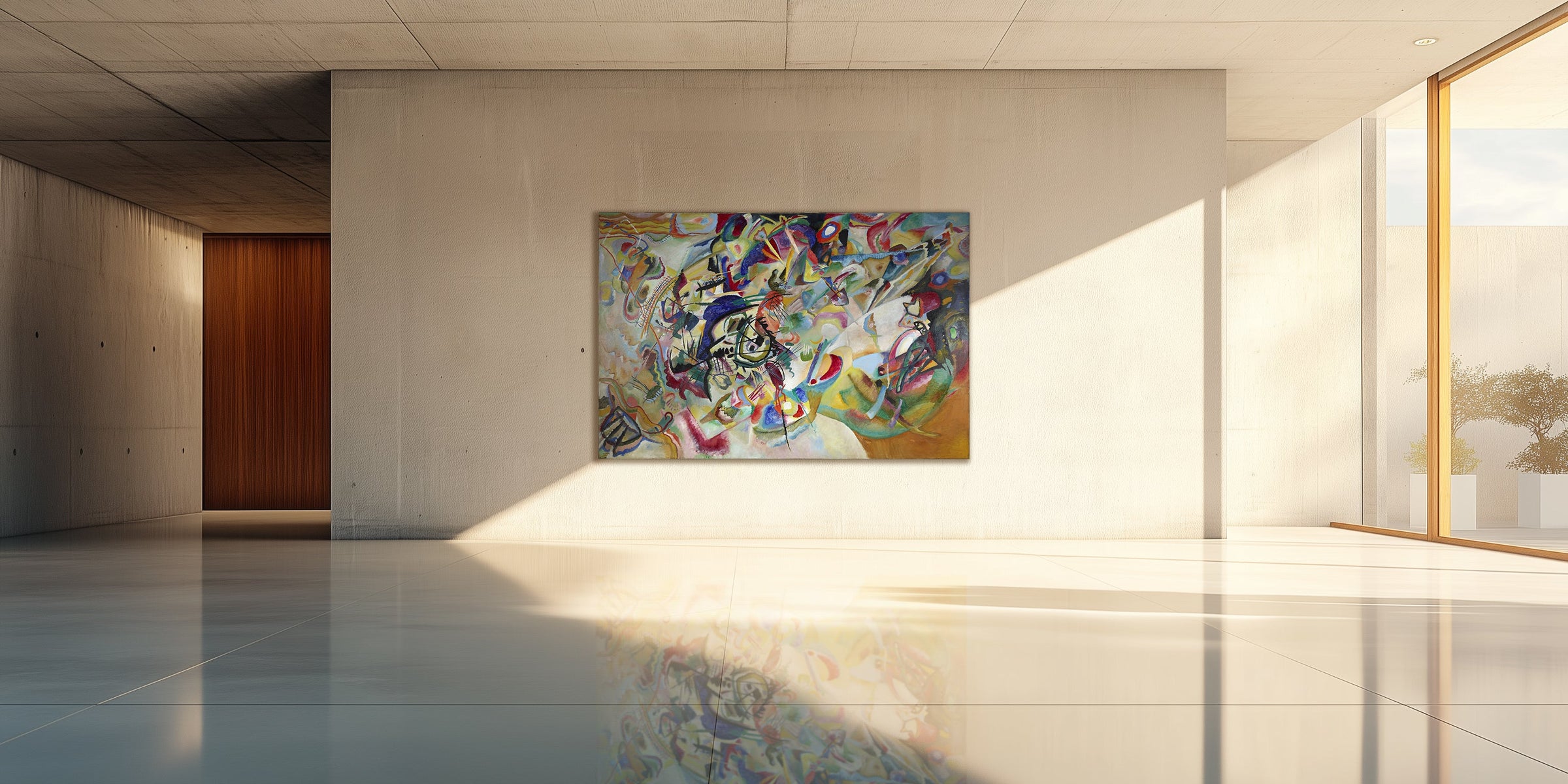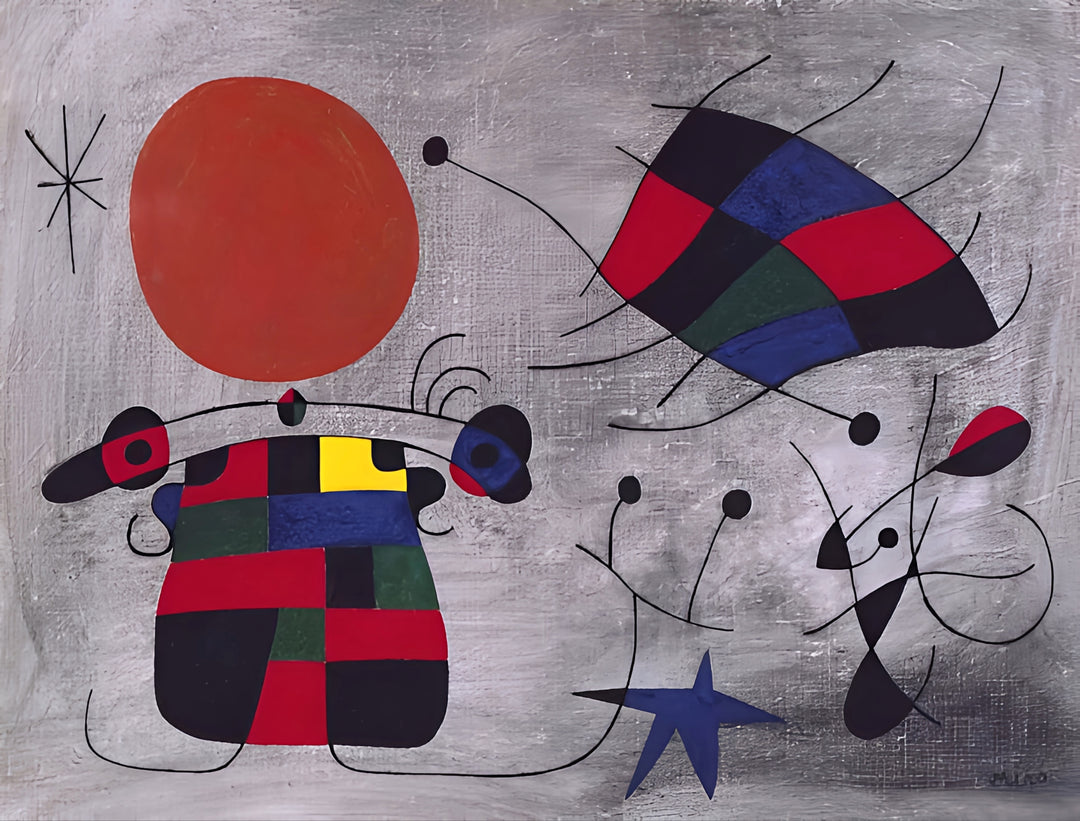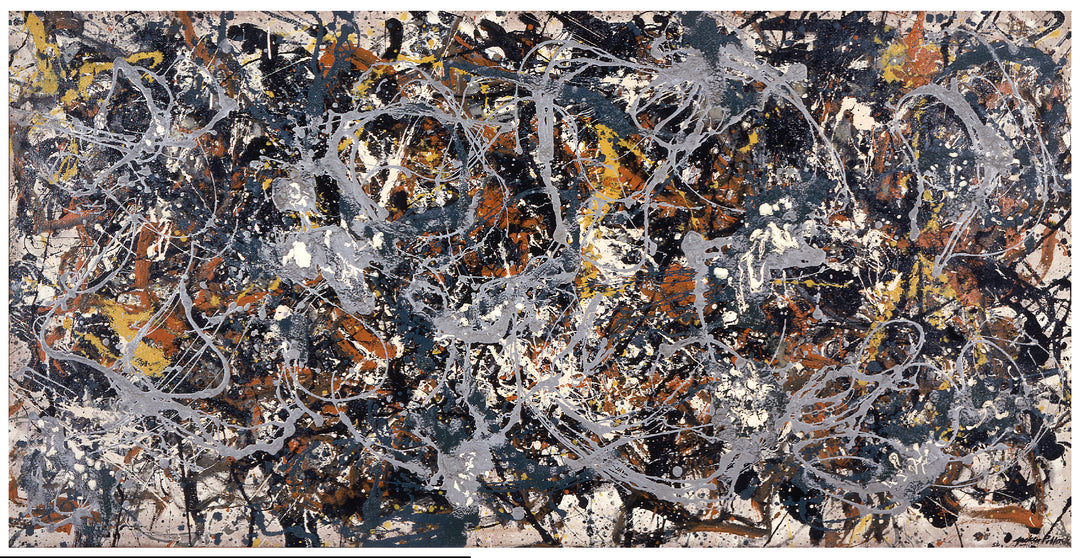
Abstract art
Abstract art emerges as an aesthetic revolution that challenges traditional visual narratives by abstaining from directly representing reality. This form of art thrives on the autonomy of line, color, and form, redefining the canvas as a field of emotional and philosophical expression, rather than a mirror of the visible world.
The origins of abstract art can be traced back to the early decades of the 20th century, when artists like Vasily Kandinsky began to explore compositions that dispensed with figurative references, arguing that art could evoke direct spiritual responses through non-objective compositions. Kandinsky is frequently cited as one of the pioneers in this field, using music as a metaphor for his theories on abstraction, where visual tones could resonate with the human psyche much like a musical composition.
Kazimir Malevich also developed a new form of abstraction, suprematism around 1915, which stood out for its use of simple geometric shapes and a limited color palette, focusing on the "supremacy of pure perception" in visual arts. On the other hand, Mark Rothko is recognized for his contribution to abstract expressionism, characterized by large fields of color that seek to evoke deep emotions in the viewer, often by creating meditative atmospheres with layered paint.
Another milestone in the evolution of abstract art was the development of cubism by Pablo Picasso and Georges Braque, who fragmented objects and figures into angles and planes that suggested a new way of seeing reality. Although initially based on visible reality, cubism paved the way for abstract art to fully explore formal independence.
The movement towards pure abstraction was further consolidated with the rise of abstract expressionism in post-war America, where artists like Jackson Pollock and Mark Rothko took abstract art to new heights of emotional expression. Pollock with his dripping technique and Rothko with his vast fields of color both sought to evoke deep and universal emotions through radically abstract means.
In terms of influence, abstract art has left an indelible mark on numerous contemporary movements. It has challenged and expanded the boundaries of minimalist art, conceptual art and modern installations, demonstrating that abstract elements can generate powerful emotional and cognitive resonance.

















